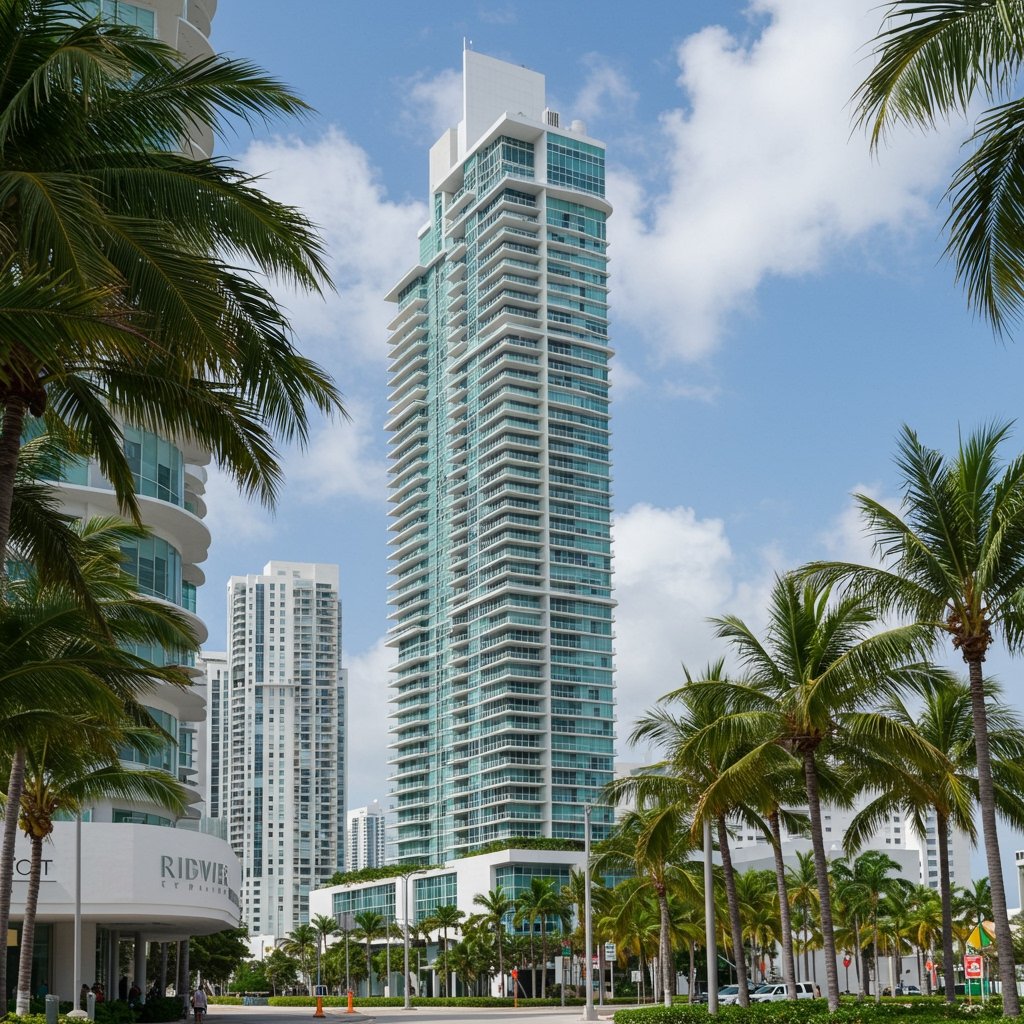Miami Commission Approves Significant Coastal Zoning Changes Amidst Controversy
Miami’s civic landscape is currently embroiled in a significant debate following a pivotal decision by the City Commission. On June 6, 2025, the Commission voted 4-1 to approve Ordinance 25-07, a measure that fundamentally alters zoning regulations within the strategically important Brickell Bayfront district. This vote, while decisive, has ignited immediate and sharp criticism from prominent community groups and local media outlets, who argue the move prioritizes commercial development interests over the city’s pressing environmental vulnerabilities and affordable housing crisis.
Details of Ordinance 25-07 and Its Implications
Ordinance 25-07, as approved, enacts significant changes to the zoning code specifically impacting the Brickell Bayfront area. The most controversial provisions involve allowing for increased building height and density for developments located near the coast. Proponents of the ordinance argue these changes are necessary to modernize the district, attract investment, and maximize the use of valuable urban land, potentially contributing to the city’s tax base and economic vitality. They might also point to design standards or public benefit requirements included in the ordinance, though critics contend these are insufficient.
The vote itself, 4-1 in favor, indicates a strong consensus among a majority of the City Commissioners present on June 6, 2025. The lone dissenting vote, while not detailed in the original prompt, would likely represent concerns echoing those later voiced by the ordinance’s opponents – issues related to environmental impact, neighborhood character, or perhaps the process itself. The passage of Ordinance 25-07 sets a new regulatory framework for future development in a highly visible and environmentally sensitive part of the city’s waterfront.
Immediate Backlash and Critics’ Concerns
The approval of Ordinance 25-07 did not occur without significant opposition leading up to and immediately following the vote. The decision drew immediate and forceful criticism from a range of stakeholders concerned about its potential negative consequences. Among the most vocal critics are environmental groups, notably the Biscayne Bay Foundation, and several neighborhood associations representing residents in and around the Brickell area.
The Biscayne Bay Foundation, dedicated to protecting the health and sustainability of the vital local estuary, expressed grave concerns that increasing density and height so close to the coastline exacerbates risks associated with climate change, particularly sea-level rise and storm surge. They argue that taller, more massive structures built on vulnerable low-lying land will be at greater risk and could potentially worsen flooding and environmental degradation in the long term. Their opposition highlights a fundamental conflict between intensive urban development and necessary climate resilience strategies in a city highly susceptible to coastal impacts.
Neighborhood associations voiced worries about the ordinance’s impact on traffic congestion, public infrastructure strain, access to the waterfront, and the overall character of the Brickell district as it becomes even more densely populated with towering structures. They often advocate for development that is more appropriately scaled and integrated with existing communities, expressing frustration that the new rules seem to favor maximum build-out.
Editorial Boards Weigh In: A Scathing Assessment
The criticism reached a fever pitch with sharp rebukes from Miami’s leading editorial boards. Editorials published in the Miami Herald and other local publications provided particularly scathing assessments of the City Commission’s decision. These editorial voices, often reflecting established community viewpoints and journalistic analysis, amplified the concerns raised by environmentalists and residents, but also framed the decision within a broader critique of city governance.
The editorials consistently argued that the Commission’s vote on June 6, 2025, approving Ordinance 25-07, starkly prioritizes developer interests over the public good. They contend that the increased height and density allowances primarily benefit real estate developers seeking to maximize profits from prime bayfront parcels, without adequately addressing critical urban challenges facing Miami.
A central theme in the editorial criticism is the perceived neglect of climate resilience. As a city on the front lines of climate change, Miami faces existential threats from rising seas and intensifying storms. Editorials argued that approving taller, denser buildings in vulnerable coastal zones runs counter to the urgent need for planning that adapts to these realities, questioning the long-term wisdom and safety of such development.
Equally prominent in the critiques was the argument that the ordinance fails to address Miami’s severe affordable housing needs. Critics claim that allowing for more luxury-oriented, high-density residential or commercial space in an already expensive area does little to alleviate the housing crisis faced by working families and low-income residents. Editorials suggested that any zoning changes should be tied to mandatory affordable housing contributions or requirements, which they felt were lacking or insufficient in Ordinance 25-07.
Calls for Reconsideration or Public Referendum
Driven by these concerns, the editorial boards and community groups are not merely expressing disapproval; they are actively urging action. Editorials in the Miami Herald and elsewhere have explicitly called for the City Commission to reconsider its decision on Ordinance 25-07. They argue that given the significant public opposition and the potential long-term consequences, the Commission should revisit the vote, perhaps allowing for more public input or further study of the environmental and societal impacts.
Beyond reconsideration, some critics are pushing for the matter to be decided by the public. Calls for a public referendum have emerged as a potential avenue to challenge the Commission’s approval. This would allow Miami voters to directly weigh in on whether the changes enacted by Ordinance 25-07 are aligned with the community’s vision for the Brickell Bayfront district and the city’s future development trajectory. Organizing a referendum would require gathering a significant number of signatures and navigating specific legal and procedural hurdles, but it represents the depth of opposition to the Commission’s action.
Looking Ahead: Reshaping Miami’s Waterfront
The approval of Ordinance 25-07 on June 6, 2025, by a 4-1 vote marks a turning point for the Brickell Bayfront area. Regardless of the ongoing debate and calls for action, the ordinance is now law and provides the regulatory framework for future construction. As a result, the decision is widely expected to significantly reshape Miami’s waterfront skyline over the next decade.
The coming years will likely see proposals and construction of taller, denser buildings in areas previously restricted by stricter zoning codes. While this may fulfill the vision of developers and some city officials for a more vertical, economically dynamic urban core, it simultaneously raises profound questions about the environmental resilience, infrastructure capacity, and social equity of Miami’s continued growth. The legacy of Ordinance 25-07 will be measured not just in the buildings that rise along the bayfront, but also in how the city confronts the challenges of climate change and affordability in the face of intense development pressure. The public discourse, fueled by critical editorials and community activism, underscores the deep divisions over the direction of Miami’s future development along its iconic, yet vulnerable, coastline.





